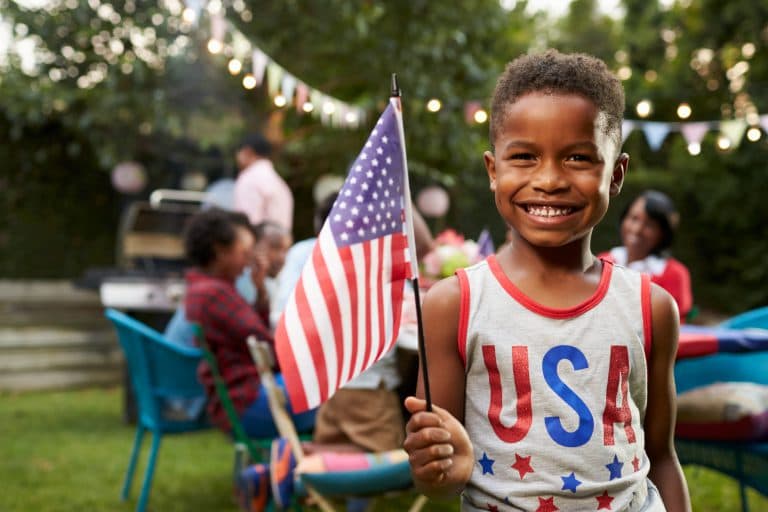Choose Safe Fun for the Fourth of July
6.26.2024 | Heather Cooper

Independence Day is next week, and families are busy planning for fun that may include celebrating with fireworks, a day at the beach or a barbecue. Dr. Tony Woodward, medical director of emergency medicine at Seattle Children’s, urges families to choose safe options for a fun holiday.
“The Fourth of July is a good time to follow the old advice of safety first,” said Dr. Woodward. “The last thing you want to do on the Fourth of July is be sidelined by an injury or illness that could have easily been prevented.”
Firework Safety
Every year, fireworks start an average of 19,500 fires. According to the Consumer Product Safety Commission (CPSC), in 2023, about 9,700 people were treated in emergency departments for fireworks injuries, and 8 people died from fireworks. Teens ages 15 to 19 had the highest rate of fireworks-related injuries, and children ages 5 to 9 had the second-highest rate. Firecrackers and sparklers, which burn as hot as 1,200 degrees, caused the most injuries.
“Sparklers and roman candles can seem fun and harmless,” said Dr. Woodward. “But every year, hospitals treat kids who have been badly burned or injured by these kinds of consumer fireworks, and these injuries are preventable.”
The safest way to enjoy fireworks is to attend a public display put on by professionals. While fireworks are illegal in many places, if you live in an area where fireworks are legal and you choose to use personal fireworks, follow the safety tips from the CPSC.
Water Safety During Gatherings
Water play and swimming are often a part of the fun during summer gatherings, so it’s important to remember to pack the appropriately-sized life jackets before heading out. Children, teens and adults should always wear life jackets when on a boat, raft or inner tube, and when swimming in lakes, rivers and the ocean. Even good swimmers can be overcome by currents, cold water or becoming overly tired. Young children should also wear life jackets when playing in or near the water and when on docks.
“It’s best to swim only in areas with lifeguards,” said Dr. Woodward. “But whether in a life-guarded area or not, adults need to closely supervise children and teens in the water and ensure life jackets are worn at all times.”
Dr. Woodward says that an adult should be within arm’s reach of young children in the water at all times. Drownings happen quickly and quietly, so active supervision is needed for older kids and teens, too. Assign a “water watcher” to be sure that an adult is watching at all times. The water watcher should remain alcohol-free and actively watch the children in or near the water.
Food Safety
Food safety is important all year long, but warmer temperatures allow bacteria to grow faster, raising the risk of food-borne illness. The U.S. Department of Agriculture (USDA) offers four steps for safe food storage and preparation during outdoor cooking:
- Clean: Bring cleaning items with you to keep hands, utensils and surfaces clean.
- Separate: Bring separate plates and cutting boards so juices from raw foods don’t contaminate cooked foods.
- Cook: Bring a food thermometer to cook foods to safe internal temperatures. You often can’t tell if meat is cooked just by looking.
- Chill: Transport meat in a cooler that is 40 degrees or below. Consider using a separate cooler for beverages since it will be opened more often. Only allow food to sit out for an hour or less.
“If you’re planning to celebrate the Fourth with family and friends, take a few minutes to think about safety to prevent a trip to the emergency room,” said Dr. Woodward. “Add sunscreen and life jackets to the packing list, buckle up for the ride, choose a designated distraction-free driver, supervise the kids and teens, and have a fun day!”